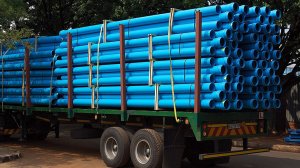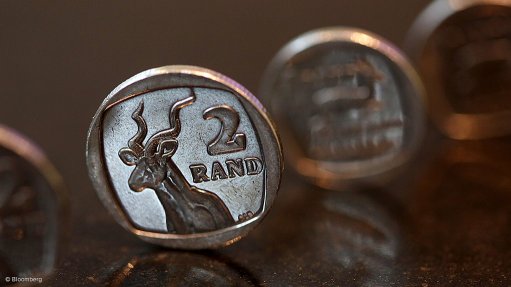Sappma pleased with results after increasing audit frequency


SAPPMA From an environmental point of view, we can do a lot more for the same amount of money and materials
Last year, more factory audits of plastic pipe producers and manufacturers who are members of the Southern African Plastic Pipe Manufacturers Association (Sappma) showed promising results leaving much hope for the future of the plastic pipes industry, says the quality regulator’s CEO, Jan Venter.
After announcing an increase in the intensity and frequency of audits earlier in 2018, involving a quality inspector taking pipe samples – during an announced or unannounced visit – and independently testing them, Sappma is pleased with the results.
“What we found is that there’s a general increase in awareness of quality at the manufacturers, and I think that needs to be linked to an increase in awareness in the marketplace of the essential need for quality regarding plastic pipes. Bottom line: the audits are serving their purpose, and the audits during this period have given us much hope for the future.”
The local need for product standards leads to the development of South African National Standards (SANS). This is often done through a direct adoption of an existing ISO standard, or the incorporation of various international standards into the creation of a home-grown product standard.
Sappma aims to improve awareness and understanding of the need for effective use of the benefits of the SANS ISO 9001:2015 quality management platform, in conjunction with SANS and international standards, processes and systems, to unlock the true potential of South African plastic pipe producers’ offering to utility owners – both locally and abroad, says newly appointed Sappma technical manager Ian Venter.
“They are not standalones – they basically dovetail into each other to give us systems with life expectancy,” he adds.
Meanwhile, public health and safety organisation NSF International joined Sappma and will put the association in an even better position to promote the protection and improvement of human health and the environment, and has enabled Sappma to share information in this regard, says Jan Venter.
“There is more of a flow of information from our counterparts, associations like ours in Europe and the US, so there is a bit of interaction as much as is required. We’ve got open doors on both sides. In most cases, it’s a verification of what’s been seen or done here, so I don’t see much of a change in terms of our operations,” he elaborates.
Thermoplastic Pipes Market
Ian Venter highlights that, in terms of advances pertaining to cost reduction and management in the plastics industry, using polyvinyl chloride (PVC) is contributing to significant cost savings, as the “net impact on the environment” of products is becoming increasingly important.
“We’re looking at systems which have design life spans of 50 years, which can be extended to 100 years. So, from an environmental point of view, we can do a lot more for the same amount of energy or money spent on traditional materials. This is an aspect that is really driving the economy as we’ve got to use the same amount of money, but actually get more services for that, which is something that Sappma is putting on the table.”
While Jan Venter maintains that, although it seems as if there has not been much development in 2018 in terms of product offering, advances were made in materials used for products, as well as in the optimisation of manufacturing processes – both in the form of polymers (plastics) pipe, auxiliary components and the jointing for the delivery of optimised PVC and high-density polyethylene pipe systems.
“It’s worth mentioning because thermoplastic pipe plays an important role in specific market sectors in the world, although it has not yet been realised to its full potential in South Africa. “Plastic pipes are now being manufactured in larger diameters and higher pressure ranges than ever known before, with the result that it is eating into the traditional steel pipes market.
Ian Venter emphasises that, while the manufacturing ability of the industry is innovative, there is more potential for growth through creating awareness and understanding of the various materials and combination of offerings that can be used. In this regard, manufacturers are playing a vital role in providing training facilities for staff in certain industries such as plumbing; this potential can be developed through the “standardisation, simplification and implementation of the product over a wider field of applications”, he adds.
A vital aspect in exploiting this potential is empowering and informing the engineers who design the materials and products used, and keeping clients informed of the various materials’ uses and advantages for their applications.
“Through international support and influences, Sappma members’ manufacturing facilities are now linked to best practices in Europe and the West, allowing for exposure to the latest processes and technologies. I think what is lagging currently is the drive towards greater market acceptance, from the end-user and specifier,” says Ian Venter.
Therefore, one of Sappma’s immediate goals is to assist in creating a stronger pull effect, says Jan Venter. This entails increasing awareness among engineers of the energy savings and environmental benefits of thermoplastic materials, the qualities of these materials and the importance of all quality products to increase the demand, while ensuring that, at least, through Sappma membership, clients are not disappointed with inferior products, he explains.
“If we can get those two sides right and they meet up, then we’ve achieved our goal. “We are working on many fronts and hope to be in a continued position to serve our county’s specific needs.” concludes Jan Venter.
Article Enquiry
Email Article
Save Article
Feedback
To advertise email advertising@creamermedia.co.za or click here
Comments
Press Office
Announcements
What's On
Subscribe to improve your user experience...
Option 1 (equivalent of R125 a month):
Receive a weekly copy of Creamer Media's Engineering News & Mining Weekly magazine
(print copy for those in South Africa and e-magazine for those outside of South Africa)
Receive daily email newsletters
Access to full search results
Access archive of magazine back copies
Access to Projects in Progress
Access to ONE Research Report of your choice in PDF format
Option 2 (equivalent of R375 a month):
All benefits from Option 1
PLUS
Access to Creamer Media's Research Channel Africa for ALL Research Reports, in PDF format, on various industrial and mining sectors
including Electricity; Water; Energy Transition; Hydrogen; Roads, Rail and Ports; Coal; Gold; Platinum; Battery Metals; etc.
Already a subscriber?
Forgotten your password?
Receive weekly copy of Creamer Media's Engineering News & Mining Weekly magazine (print copy for those in South Africa and e-magazine for those outside of South Africa)
➕
Recieve daily email newsletters
➕
Access to full search results
➕
Access archive of magazine back copies
➕
Access to Projects in Progress
➕
Access to ONE Research Report of your choice in PDF format
RESEARCH CHANNEL AFRICA
R4500 (equivalent of R375 a month)
SUBSCRIBEAll benefits from Option 1
➕
Access to Creamer Media's Research Channel Africa for ALL Research Reports on various industrial and mining sectors, in PDF format, including on:
Electricity
➕
Water
➕
Energy Transition
➕
Hydrogen
➕
Roads, Rail and Ports
➕
Coal
➕
Gold
➕
Platinum
➕
Battery Metals
➕
etc.
Receive all benefits from Option 1 or Option 2 delivered to numerous people at your company
➕
Multiple User names and Passwords for simultaneous log-ins
➕
Intranet integration access to all in your organisation



















